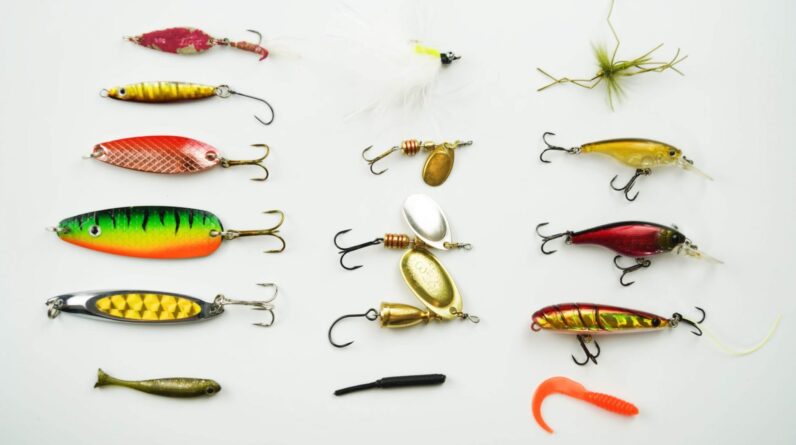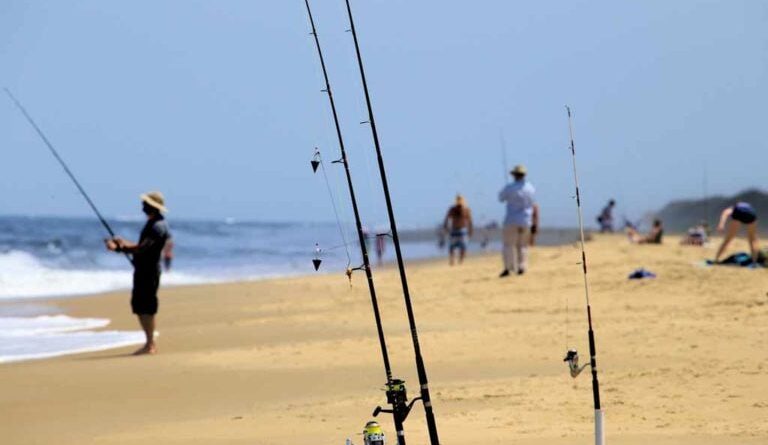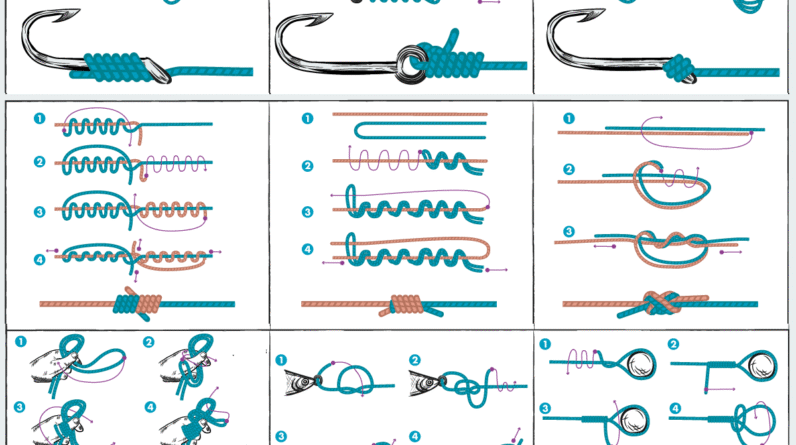1. Introduction to Jigging with the Penn 500L Reel
Jigging with the Penn 500L: Jigging is one of the most exciting and productive fishing techniques—known for its ability to attract powerful, deep-dwelling fish through rhythmic rod-and-reel movement. Among the reels trusted by anglers worldwide for this technique, the Penn 500L Jigmaster has become legendary. Designed for strength, simplicity, and endurance, this reel has proven itself in both shallow coastal waters and deeper offshore environments.
Whether you’re targeting yellowtail, amberjack, grouper, or even tuna, jigging with the Penn 500L is a winning combination when done right. But success doesn’t come from gear alone—you need the right approach, technique, and maintenance strategy to really make it shine.
This comprehensive guide, proudly presented by our expert jigging team at Cheerfulfisherman.com, delivers six outstanding tips—plus a valuable bonus—to help you get the most out of your jigging experience with the legendary Penn 500L reel. Known for its durability and smooth performance, the Penn 500L is a favorite among serious anglers. Whether you’re targeting deep-water species or jigging along rocky reefs, understanding how to properly use this reel can dramatically increase your success on the water. Let’s explore what sets this reel apart and how you can use it to maximize every fishing trip.
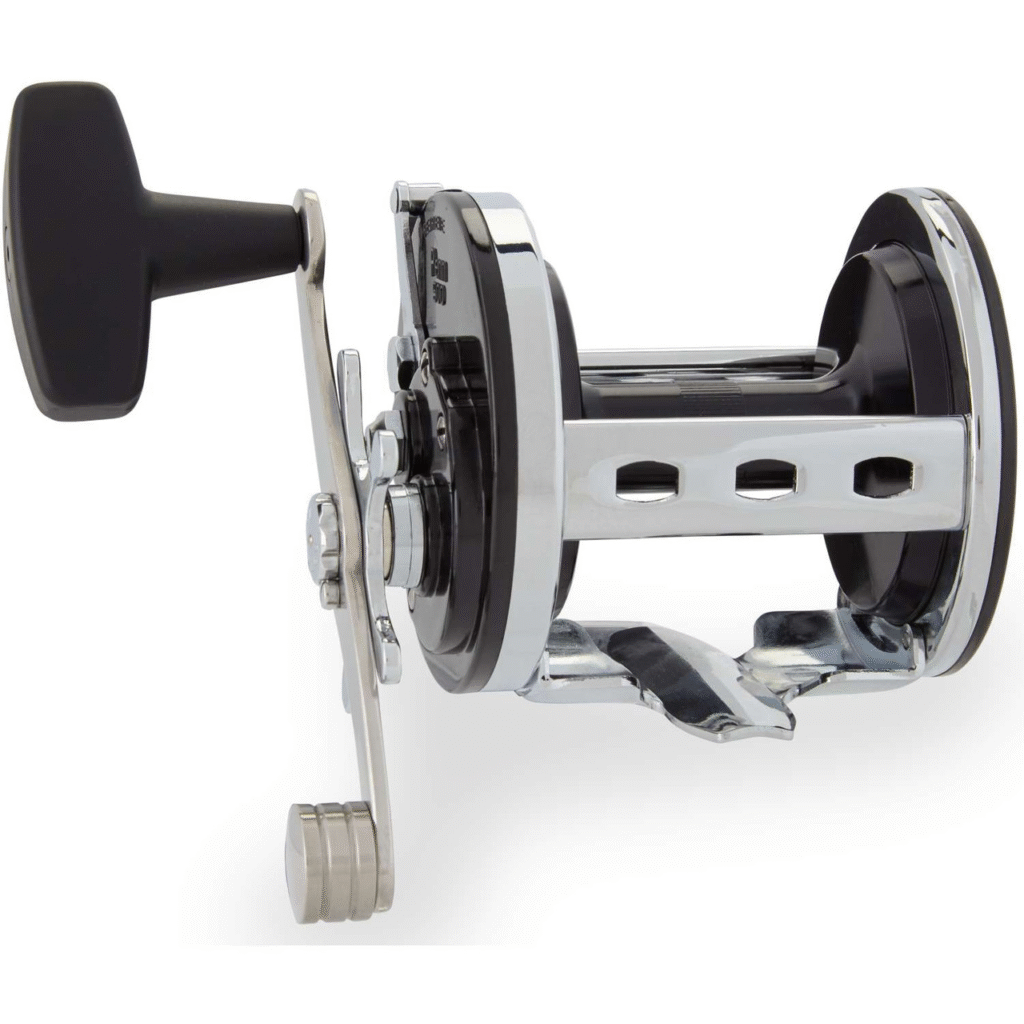
2. What Makes the Penn 500L Ideal for Jigging?
Before getting into the actual tips, it’s important to understand why the Penn 500L is still so respected among jigging enthusiasts despite modern alternatives flooding the market.
A. Simple, Durable Design
The 500L features a metal frame, a robust gear system, and stainless steel components that withstand saltwater environments. Its simplicity makes it easy to service and hard to break.
B. High Gear Ratio
It comes with a 4.0:1 gear ratio—ideal for jigging techniques that require quick retrieves and aggressive jig action.
C. Free-Spool Lever Action
The iconic “Jigmaster” free-spool lever allows for quick drops when fish are feeding deep—perfect for vertical jigging applications.
D. Affordability and Parts Availability
One of the key appeals is the low price point and easy access to replacement parts, making it ideal for anglers who like to maintain their own gear.
E. Versatility
Though originally designed for general-purpose saltwater fishing, the 500L is remarkably versatile, capable of handling both light and moderate jigging applications with the right setup.
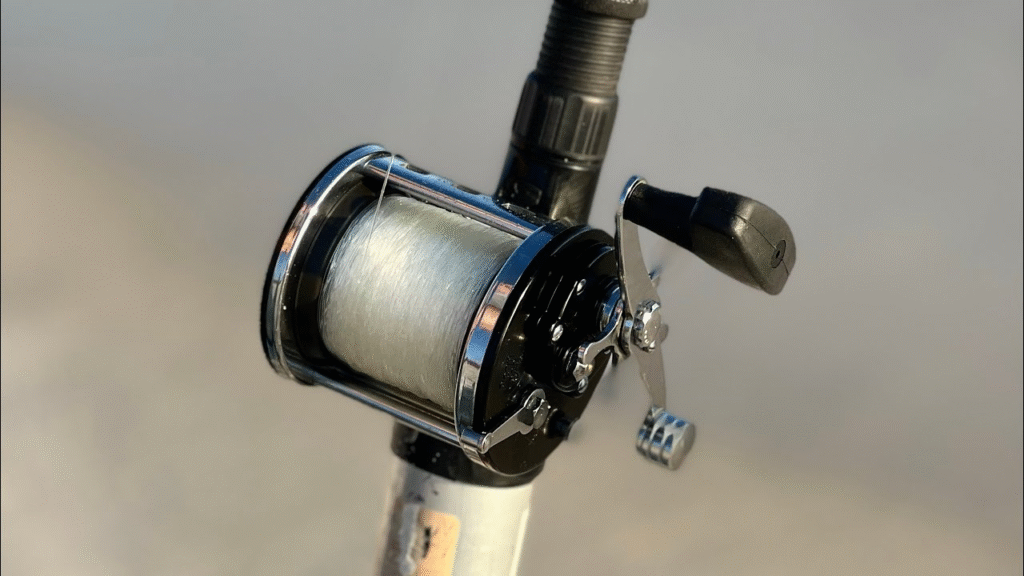
3. Tip #1: Know Your Target Species and Depths
Jigging without a plan is like casting blind into the wind. The first step to successful jigging with your Penn 500L is understanding the target fish species and the depths they inhabit.
A. Common Species for Jigging with the Penn 500L
- Yellowtail Snapper – 30 to 150 feet
- Amberjack – 100 to 300 feet
- Grouper – 100 to 400 feet
- Lingcod – 60 to 250 feet
- Tuna (smaller species) – 100 to 300 feet
B. Adapt Your Jig Weight to Depth
Jig weight must correlate to depth and current. Use this rule of thumb:
- 1 oz per 10–15 ft of depth
- Add extra weight for heavy current
C. Know the Bottom Structure
Use a fish finder or sonar to locate:
- Rock piles
- Drop-offs
- Wrecks
- Reefs
These are prime jigging zones where predatory fish lurk.
4. Tip #2: Master the Vertical Jigging Technique
The Penn 500L is perfect for vertical jigging, thanks to its quick drop mechanism and strong retrieve.
A. Basic Vertical Jigging Motion
- Drop the jig straight down to your desired depth.
- Engage the reel.
- Pump the rod upward, then drop it back down while reeling.
- Repeat rhythmically to imitate a wounded baitfish.
B. Control Speed and Action
Use a slow, flutter-style action for grouper and bottom dwellers. For faster predators like tuna or amberjack, go aggressive and quick.
C. Pause Between Jerks
Predatory fish often strike when the jig stops briefly. Mimic erratic baitfish by adding sudden pauses or direction changes.
D. Stay Vertical
If fishing from a drifting boat, use heavier jigs or correct your position frequently to maintain a true vertical drop, which is essential for this technique.

5. Tip #3: Match the Right Rod with Your 500L Reel
Pairing the Penn 500L with the right rod enhances control, sensitivity, and overall jigging efficiency.
A. Best Rod Characteristics for Jigging
- Length: 6 to 7 feet
- Power: Medium-heavy to heavy
- Action: Fast
- Material: Graphite or composite for sensitivity and strength
B. Recommended Jigging Rods
- Ugly Stik Tiger Elite Jigging Rod – Affordable, durable, ideal for beginners
- Shimano Trevala Series – Lightweight, powerful, perfect for experienced jiggers
- Daiwa Saltist Jigging Rod – Great backbone and hook-setting ability
C. Rod Handle and Grip
Look for non-slip EVA or cork grips, as jigging is a repetitive motion and slippery handles can cause fatigue and missed hooksets.
6. Tip #4: Use the Right Jigs and Baits
Matching your jigs and baits to the environment and species can make or break your fishing day.
A. Types of Jigs to Use
- Butterfly Jigs
- Ideal for fast jigging
- Mimics fleeing bait
- Use in open water or mid-depth
- Flat-Fall Jigs
- Good for fluttering action
- Excellent for deep-water bottom species
- Knife Jigs
- Long, slender, great for fast drop
- Perfect for tuna and amberjack
- Tungsten Jigs
- Compact but heavy
- Cuts through currents faster
B. Jig Weight Examples Based on Depth
| Depth (ft) | Jig Weight (oz) |
|---|---|
| 60–120 | 2–4 oz |
| 120–200 | 4–7 oz |
| 200–300 | 6–12 oz |
| 300+ | 10–16 oz |
C. Add Assist Hooks and Skirts
Assist hooks increase hook-up rates. Skirts or glow elements attract attention in deeper, darker waters.

7. Tip #5: Upgrade Your Line and Drag Settings
The Penn 500L is strong, but upgrading your line and understanding drag settings are key to fighting big fish.
A. Best Line Types for Jigging
- Braided Line (40–65 lb test) – Thin diameter, zero stretch, excellent sensitivity
- Fluorocarbon Leader (30–80 lb test) – Abrasion resistance and stealth in clear waters
B. Drag Setting Tips
Set your drag to 25–30% of your line’s breaking strength. For example:
- 50 lb braid = 12–15 lb drag
- Use a digital scale for precision
- Re-check drag every 30 minutes during intense sessions
C. Consider Upgrading Drag Washers
Some 500L users replace the factory drag washers with carbon fiber upgrades for smoother pressure and better heat resistance.
8. Tip #6: Maintain Your Penn 500L for Peak Performance
Even the toughest reels need TLC—especially when saltwater, sand, and fish slime are involved.
A. After Each Trip
- Rinse the reel gently with freshwater
- Dry thoroughly with a towel
- Loosen the drag to prevent washer compression
B. Monthly Maintenance
- Open the side plate
- Apply Penn Reel Grease and Reel Oil to:
- Bearings
- Gears
- Handle connections
- Inspect drag washers for wear
C. Annual Full Service
Send to a professional or do a deep clean:
- Full disassembly
- Soak parts in degreaser
- Replace rusty or worn parts
- Upgrade to carbon drag washers
The 500L’s classic design makes it easy to maintain, even for amateur reel techs.
9. Bonus: Jigging Locations Where the 500L Shines
A. Florida Keys
- Fish: Grouper, snapper, king mackerel
- Depth: 50–300 ft
- Notes: Jig over reefs, wrecks, and drop-offs
B. Gulf of Mexico
- Fish: Red snapper, amberjack
- Depth: 60–400 ft
- Notes: Target oil rigs and natural structures
C. California Coast (Southern)
- Fish: Yellowtail, calico bass
- Depth: 80–150 ft
- Notes: Jig over kelp forests and near islands
D. Panama and Costa Rica Offshore
- Fish: Tuna, jack crevalle
- Depth: 100–300 ft
- Notes: Jig over underwater seamounts
E. Northeast USA
- Fish: Cod, haddock, pollock
- Depth: 150–350 ft
- Notes: Deep drop jigging over rock ledges
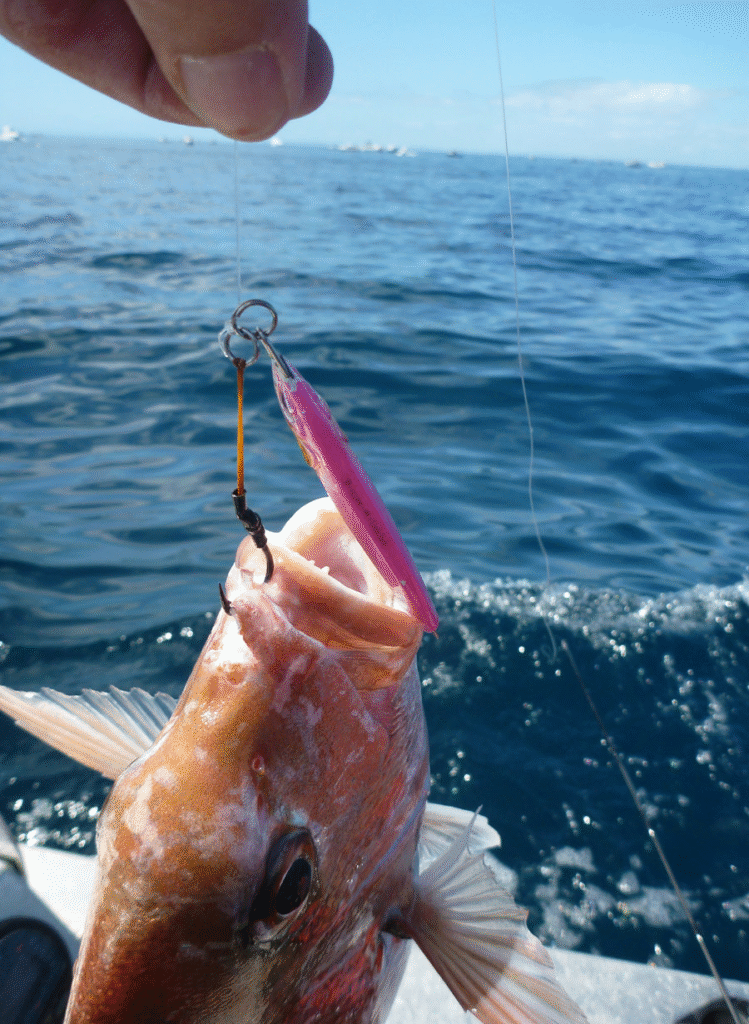
10. Frequently Asked Questions About the Penn 500L
Q: Can the Penn 500L handle big tuna?
A: While it can handle small to mid-sized tuna, it’s not ideal for giant bluefin. Upgrade drag washers and use strong braided line for best performance.
Q: Is the Penn 500L good for slow-pitch jigging?
A: It can work for modified slow-pitch, but modern reels with higher speed and smoother drags may outperform it in that niche.
Q: Can I use the Penn 500L in freshwater?
A: Absolutely! It’s overkill for small fish, but it works great for lake trout, musky, and striped bass.
Q: Is it worth upgrading an old Penn 500L?
A: Definitely. With modern drag washers, new bearings, and a tuned spool, older 500Ls can be beasts on the water.
11. Final Thoughts on Jigging Success
The Penn 500L Jigmaster may be a classic reel, but it continues to hold its ground in the modern jigging world. By using the six great tips covered in this article—plus knowing the right locations and jig styles—you can unlock the full potential of this time-tested tool.
Remember, successful jigging isn’t just about jerking your rod—it’s a deliberate technique that demands the right gear, rhythm, and knowledge of the underwater environment. With the 500L, you’re equipped for success… if you follow through with preparation and maintenance.
Ready to jig like a pro? Dust off your Penn 500L, spool it up, and head to your nearest reef or wreck. There’s a monster fish waiting at the end of your line.

